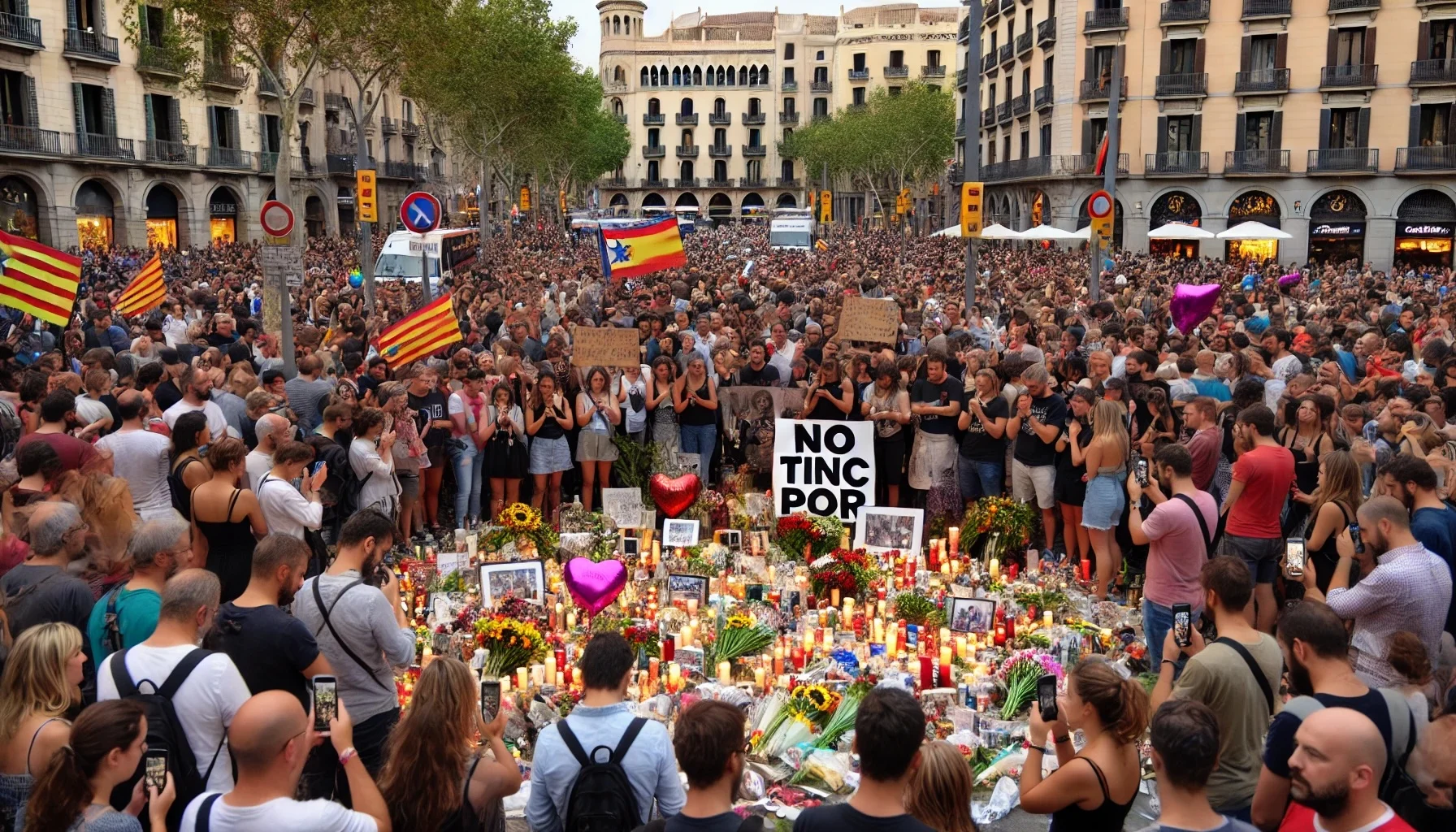
The 2017 Barcelona Attacks
by: The Calamity Calendar Team
August 17, 2017
A Sunny Day Turns Dark
On a typical summer day in Barcelona, the iconic La Rambla was teeming with locals and tourists alike, savoring the vibrant atmosphere of one of the city's most famous streets. As the sun shone brightly overhead, the picturesque scene was abruptly shattered around 4:50 PM when a white Fiat van plowed through the pedestrian walkway, leaving a trail of devastation in its wake.
The Attack Unfolds
The van, driven by 22-year-old Younes Abouyaaqoub, zigzagged down the street, deliberately targeting as many people as possible. Screams filled the air as the van struck pedestrians, killing 13 and injuring over 130. Abouyaaqoub managed to flee the scene amidst the chaos, blending into the panicked crowd.
The initial shock quickly turned into a frantic manhunt as law enforcement agencies across Spain mobilized to capture the fleeing terrorist. Abouyaaqoub's escape led him to carjack another vehicle, tragically killing its driver, Pau Pérez, and using the car to further his escape from Barcelona.
A Night of Terror in Cambrils
As authorities were grappling with the aftermath in Barcelona, the nightmare continued in the early hours of August 18 in the coastal town of Cambrils. Five members of the same jihadist cell drove into the town with a similar deadly intent. They rammed their car into pedestrians before attacking with knives. This second wave of terror resulted in six injured civilians and one police officer. Quick-thinking police officers acted swiftly, shooting and killing all five attackers, preventing further bloodshed.
One of the injured civilians succumbed to her wounds, adding to the death toll of this horrific spree of violence.
The Manhunt Ends
The manhunt for Younes Abouyaaqoub continued for several tense days, with the entire nation on edge. The breakthrough came on August 21 when police finally located him in Subirats, a town near Barcelona. Armed with a fake explosive belt, Abouyaaqoub was shot and killed by police, bringing an end to his reign of terror.
Thanks for subscribing!
The Aftermath and Healing
The attacks left an indelible mark on Barcelona and Spain. Sixteen innocent lives were lost, and the wounds, both physical and emotional, were deep. The economic impact was immediate as tourists canceled their trips, and a palpable sense of fear gripped the city. However, the resilience of Barcelona’s people was unwavering.
Emergency services and law enforcement agencies were lauded for their swift response and bravery. Vigils and memorials sprouted across the city as locals and visitors alike gathered to mourn and remember the victims. The phrase “No tinc por” (I am not afraid) became a rallying cry, a testament to the city's defiance against terror and hatred.
Unveiling the Cell
As investigations unfolded, it was revealed that the cell responsible for the attacks was based in the Catalonian town of Ripoll. Led by an imam named Abdelbaki es Satty, the group of young men of Moroccan descent had been radicalized and were initially planning a more devastating attack involving explosives. The accidental explosion in their Alcanar safe house on August 16 thwarted their original plans, pushing them to carry out the vehicular attacks.
Authorities arrested several individuals connected to the cell, and trials began to ensure justice for the victims and their families. The incident also prompted Spain and other European countries to reassess and bolster their counter-terrorism strategies, emphasizing intelligence sharing and preventive measures.
A City United
The tragedy that struck Barcelona in August 2017 highlighted the city's spirit and unity. Despite the pain and fear, the people of Barcelona stood together, demonstrating resilience and solidarity. Memorials were erected, and communities came together to support the victims' families. The legacy of “No tinc por” continues to symbolize the strength and courage of Barcelona, a city that refuses to be broken by terror.
In the face of such a brutal attack, Barcelona showed the world that while the streets of La Rambla may have been stained with blood, the heart of the city remains unbowed and unbroken.
Stay in the Loop!
Become a Calamity Insider and get exclusive Calamity Calendar updates delivered straight to your inbox.
Thanks! You're now subscribed.